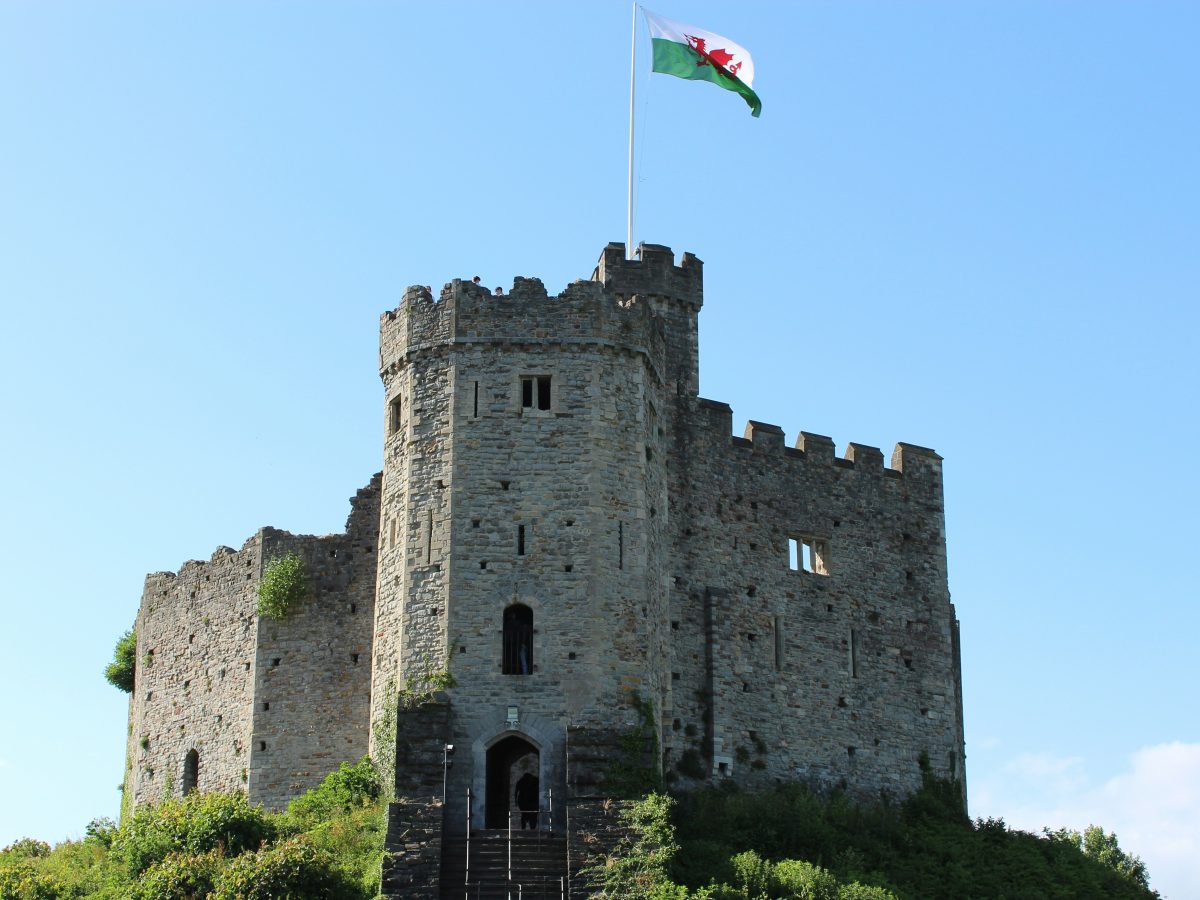𝘈𝘱𝘱𝘳𝘰𝘹 𝘳𝘦𝘢𝘥 𝘵𝘪𝘮𝘦: 4 𝘮𝘪𝘯𝘴🕒
Landing pages are key for driving conversions. Whether it's for purchases, form submissions or other actions, a well-made landing page can significantly boost your conversion rates.
But, with global markets expanding, having an effective landing page in just one language simply isn't enough for international success.
To truly maximise your conversion potential, you need to localise your landing pages. Here is a quick idea of how:
1) Translate website
2) Adapt images, colour schemes, expressions and more
3) Localise videos and multimedia
4) Utilise local SEO
5) Consider legal compliance
In this blog, we will also explore:
- What landing page localisation actually means
- Best practices for localising landing pages
- And more
Firstly, what are landing pages?
Let’s start with the basics. A landing page is a standalone web page designed specifically for a marketing or advertising campaign. It’s where a visitor 'lands' after clicking on a link from an email, ad or other digital source.
Unlike regular web pages that encourage exploration, landing pages focus on driving a single objective, usually called a call-to-action (CTA). This could be making a purchase, filling out a form, signing up for a newsletter or downloading a resource.
In some cases, brands will even have their landing pages exist in isolated, with no menu's or navigation to anything other than the CTA.
Landing pages are hugely essential for conversions because they are designed with a specific goal in mind, making it easier for visitors to take the desired action without distractions.
And a well-optimised landing page can significantly improve your conversion rates and ultimately your return on investment (ROI).
What is landing page localisation?
Landing page localisation is the process of adapting a webpage designed for marketing or conversion to fit the cultural, linguistic and contextual needs of a specific target audience in a different location.
Just to be extra clear, localisation is more than direct translation. A successful localisation strategy will involve translation, cultural adaptation, changing user experience, adapting keywords, and more. This can significantly increase engagement and conversions.
As markets become more global, tailoring your landing pages to different languages and cultures is crucial.
In fact, businesses with multilingual website experiences an average conversion rate increase of 70%.
How to localise a landing page
- Website translation: Accurate translation of website text is the first step. Ensure the language used is natural and contextually appropriate for the target audience. We can offer a free consultation to help you understand your target market(s) and language(s).
- Adapting images: Visual content should be culturally relevant. Images that resonate in one country might not have the same impact in another. Choose visuals that reflect the local culture and values.
- Cultural adaptation: Cultural nuances play a significant role in how content is perceived. This includes everything from colour schemes to idiomatic expressions. You'll need a language service provider to ensure your content respects and aligns with local customs and sensibilities.
- Localising videos and multimedia: Videos are powerful engagement tools. Localise them by adding subtitles, dubbing and other media localisation options.
- Local SEO: With our help, you'll need to identify keywords that your potential customers are searching for. In many cases, these aren't direct translations of your existing keywords. Also, you'll want to localise your meta descriptions, titles, etc.
- Legal considerations: Ensure compliance with global regulations, especially regarding data collection and privacy policies.
"Businesses with multilingual websites experience an average conversion rate increase of 70%."
Best practices for localising landing pages
Global A/B testing and metrics review
Localisation isn't a one-time effort. It requires continuous testing and optimisation.
A/B testing lets you compare different versions of your landing page to see which performs better.
- Importance of ongoing testing: Regularly test different elements of your landing page, including headlines, CTAs, images, and copy, to see what resonates best with your audience.
Here, it is optimal to segment by market or language. Different regions will have varying preferences. A good localisation plan will recognise that each region is different. - Reviewing and analysing conversion metrics: Monitor key performance indicators (KPIs) like conversion rates, bounce rates and time on page. Use this data to make informed decisions about what changes to implement. Again, remember to segment each region.
Segmentation by region or market
Different regions or markets may have varying preferences and behaviours.
Segmenting your landing pages by region allows you to tailor your approach to meet the ongoing localisation needs of each audience.
- Importance of regional segmentation: Different regions have different cultural norms, preferences and expectations. By segmenting your audience, you can create more personalised and effective landing pages.
- Customising landing pages for different markets: Use data and insights to customise your content, offers and messaging for each market. This can significantly improve relevance and engagement.
- Understanding audience preferences: Conduct market research to understand the unique preferences of each audience. This can include language preferences, purchasing behaviours and preferred communication channels.
Conclusion
So to sum up, using landing page localisation as a strategy to boost your conversions in a global market is incredibly beneficial.
By speaking the language of your audience and adapting to their cultural context, you can create more engaging and effective landing pages.
Remember to continually test and optimise your pages based on performance data and segment your audience to tailor your approach for different markets.
Contact Wolfestone today to learn how we can help you maximise your conversion potential through effective localisation and translation.
𝘒𝘦𝘪𝘳𝘢𝘯 𝘩𝘢𝘴 𝘣𝘦𝘦𝘯 𝘸𝘳𝘪𝘵𝘪𝘯𝘨 𝘢𝘣𝘰𝘶𝘵 𝘭𝘢𝘯𝘨𝘶𝘢𝘨𝘦 𝘴𝘰𝘭𝘶𝘵𝘪𝘰𝘯𝘴 𝘴𝘪𝘯𝘤𝘦 2021 𝘢𝘯𝘥 𝘪𝘴 𝘤𝘰𝘮𝘮𝘪𝘵𝘵𝘦𝘥 𝘵𝘰 𝘩𝘦𝘭𝘱𝘪𝘯𝘨 𝘣𝘳𝘢𝘯𝘥𝘴 𝘨𝘰 𝘨𝘭𝘰𝘣𝘢𝘭 𝘢𝘯𝘥 𝘮𝘢𝘳𝘬𝘦𝘵 𝘴𝘮𝘢𝘳𝘵. 𝘏𝘦 𝘪𝘴 𝘯𝘰𝘸 𝘵𝘩𝘦 𝘏𝘦𝘢𝘥 𝘰𝘧 𝘔𝘢𝘳𝘬𝘦𝘵𝘪𝘯𝘨 𝘢𝘯𝘥 𝘰𝘷𝘦𝘳𝘴𝘦𝘦𝘴 𝘢𝘭𝘭 𝘰𝘧 𝘰𝘶𝘳 𝘤𝘰𝘯𝘵𝘦𝘯𝘵 𝘵𝘰 𝘦𝘯𝘴𝘶𝘳𝘦 𝘸𝘦 𝘱𝘳𝘰𝘷𝘪𝘥𝘦 𝘷𝘢𝘭𝘶𝘢𝘣𝘭𝘦, 𝘶𝘴𝘦𝘧𝘶𝘭 𝘤𝘰𝘯𝘵𝘦𝘯𝘵 𝘵𝘰 𝘢𝘶𝘥𝘪𝘦𝘯𝘤𝘦𝘴.







